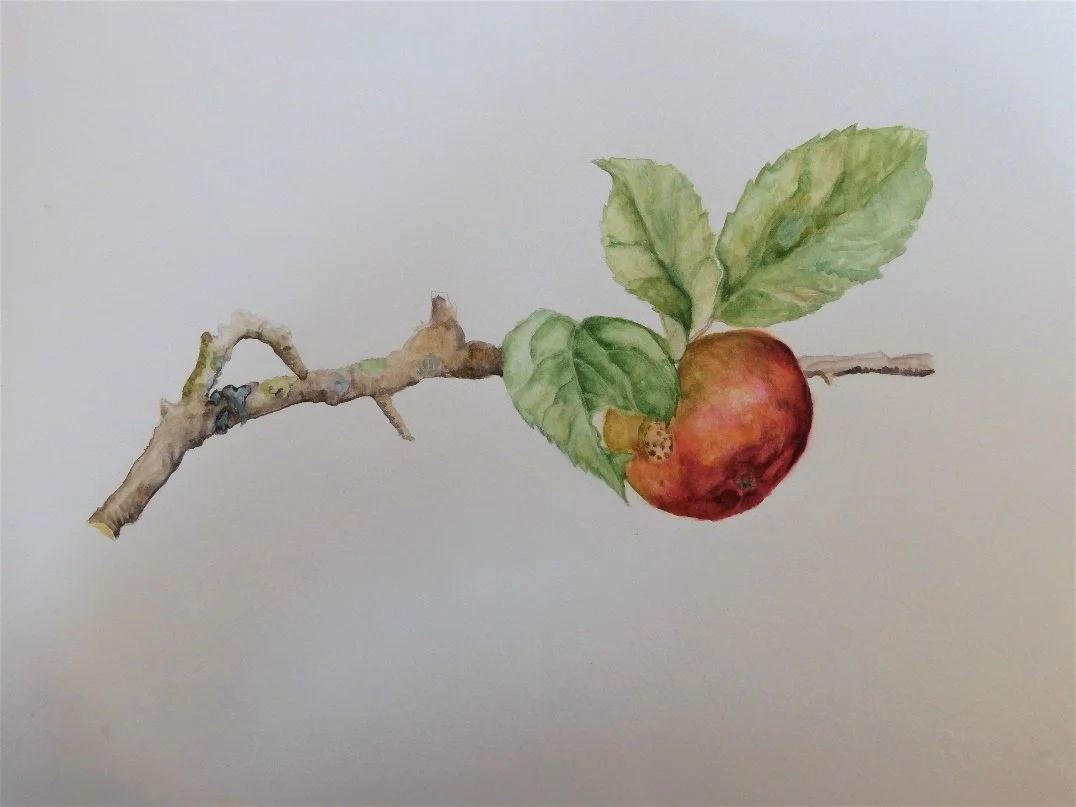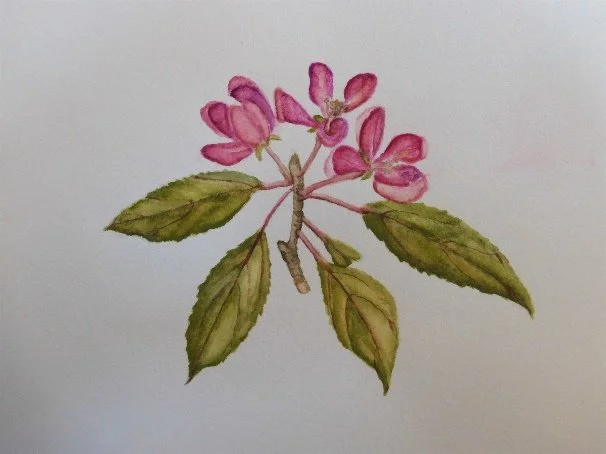Taking Stock Of Our Apple Heritage
A brief introduction into the heritage of our apple trees and grafting a sustainable future
The apple, a member of the Rosaceae family, belongs to the genus Malus. It is one of the United Kingdom's most consumed fruits, and apple symbolism has roots in many aspects of our religious, cultural, and social lives. We consume, quote, draw, dance, wassail, bob, press, preserve, ferment and drink the fruits of the trees. Despite the continuation of tradition, a pressing question remains: Are we losing connection with our top fruit?
Apple Illustration by Phoebe Jourdan
The domesticated apple is believed to have originated in the Central Asian fruit valleys of remote Kazakhstan, from its wild ancestor, Malus sieversii. The apple, along with many woody species, is heterozygous, and trees do not come true to type from seed. Although initially troubling for breeders, this trait led to great evolutionary diversity in apples as seeds were dispersed across many regions. The discovery of grafting in about the first millennium BCE allowed early growers to produce exact clones. Grafting fuses plant parts, so vascular continuity is established. Usually, this involves inserting a shoot (scion) from a mature tree into an opening in another plant that has an attached root system. Grafting was a pivotal skill, leading to the movement of the apple from Asia to Northern Europe.
The advent of grafting was historically met with mixed emotions. In the 16th century, Jewish law prohibited the use of citron fruit, which had been grafted onto lemon rootstock, for the feast of Tabernacles.
Grafting saw a rebirth in the Victorian period, as apples with interesting characteristics were sourced and brought to Europe. Many of the local varieties we see today were collected and grown in this era. Post-war agriculture also saw the rapid propagation through grafting of specific apple species. These species were chosen for their ability to quickly produce uniform, disease-resistant, and commercially reliable crops. A catalyst that led to a declining reliance on heritage apples. Instead, growers began to focus on the famous few. The 1800s saw the discovery of the Cox, Granny Smith, and Bramley, followed in the 1910s by Golden Delicious, and then Gala in the 1930s and Braeburn in the 1950s.
Modern orchard apple varieties are grown on dwarfing rootstock and bred for the absolute best taste and disease resistance. They also provide the most economic promise to apple producers. These trees can be closely planted and mechanically harvested, ensuring easy and efficient cropping, all important factors in feeding a growing population. It is therefore understandable that some producers must question the importance of heritage crops.
Our uniform crops of carefully selected genetic clones are at risk. Pest and disease outbreaks in the form of fungus, bacteria, or viruses can devastate crops. This has been seen recently in the olive industry, as has the devastating impact of Xylella fastidiosa. Climate change is also likely to reap further havoc on our ability to produce a uniform crop, with necessary watering regimes becoming harder to meet.
Today, there is still hope; around 7,500 eating apple varieties can be found worldwide. However, many heritage varieties are slipping through the net, abandoned in favour of mainstream commercial varieties. This is evidenced by the demise of many traditional orchards. It is estimated by Natural England that since 1950, the UK orchard area has declined by 63%.
In Cornwall, along with many UK regions, there are examples of preserved orchards that are becoming rarer by the day. These orchards contain local treasures, a lost kingdom of heritage, which should be carefully conserved. Local apples have descriptive cultivar names, including in Cornwall: Breadfruit, Gillyflower and Pendragon (eating apples), Collogett Pippin (a colossal cider apple), and King Byerd (cooking apple). Westcountry apples can be grafted or grown through the collection of ‘Pitchers’.


